Of the tombs of the 120 doges of the Venetian Republic, many of the early burials are lost.
One of the earliest surviving tombs is not of one doge, but of two.
It is also by far the easiest to see, and probably the least noticed. In short, one of those Venetian treasures — hidden in plain view — which everybody sees, but few notices.
The sarcophagus is located on the façade of the Basilica dei SS Giovanni e Paolo in the Sestiere Castello.
It is the burial of Jacopo Tiepolo, the 43rd doge of Venice, and of his son, Lorenzo Tiepolo, the 46th doge.
Who was Jacopo Tiepolo
Jacopo Tiepolo was from an established and wealthy merchant family in Venice, which, however, hadn’t previously participated much in politics.
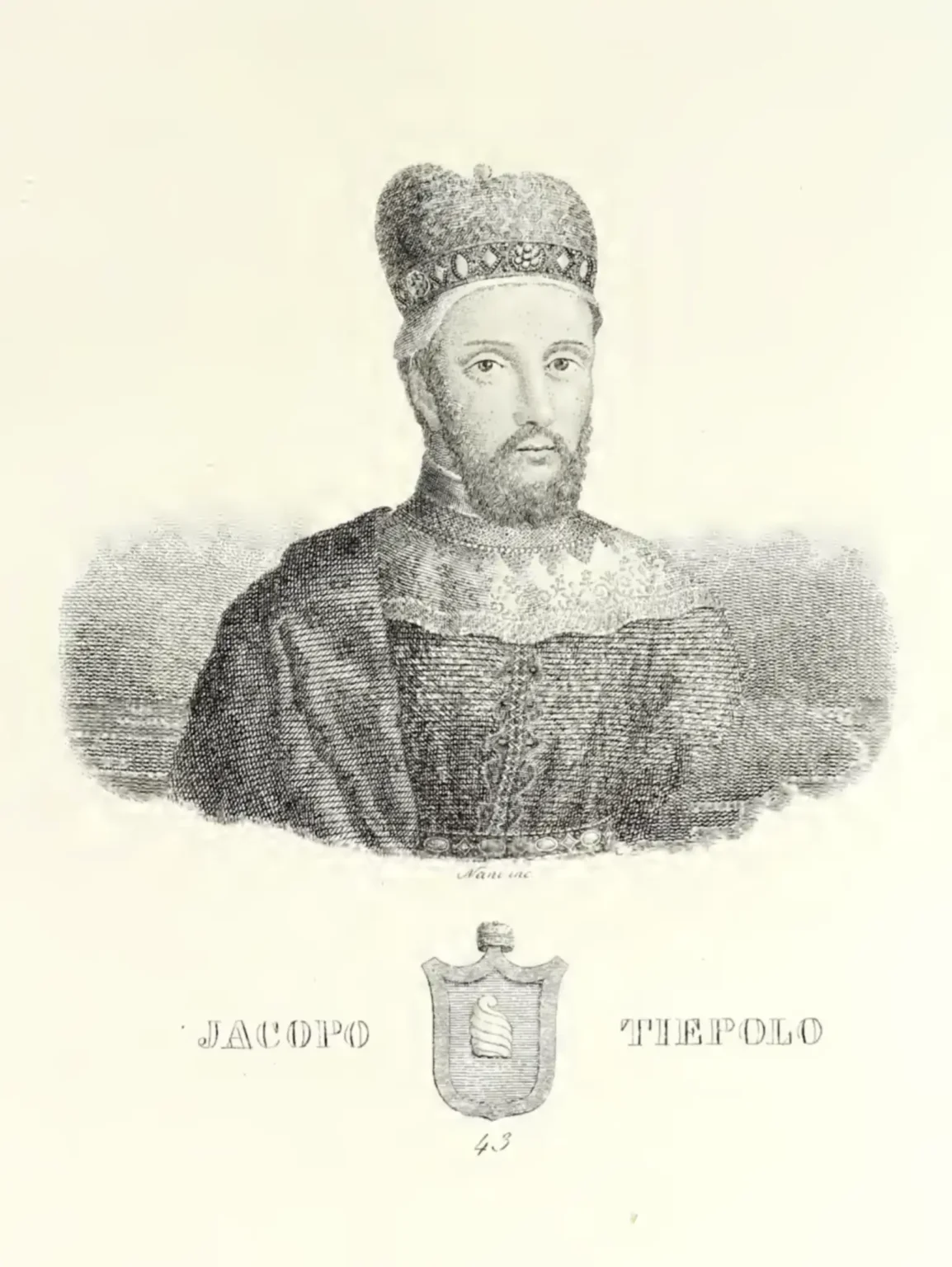
He was probably born sometimes around 1170 because we know he was active in Venetian trade on Constantinople as early as in 1190 and in 1196, in fleets financed by Pietro Ziani, son of doge Sebastiano Ziani (1172–1178).
In 1205, after the death of doge Enrico Dandolo during the Fourth Crusade, Jacopo Tiepolo was one of the forty electors who chose the new doge. The new doge was Pietro Ziani, to whom Tiepolo was close. Pietro Ziani would head the Republic for the next two decades.
Therefore, at an age of around 35, the future looked bright for Jacopo Tiepolo.
During the reign of Pietro Ziani, Tiepolo was appointed to many both powerful and prestigious positions within the Republic of Venice.
Political positions in Venice were generally for a term of one year, with no immediate re-election possible, while roles further away could be two, three or five years. This means that even a well-connected aristocrat like Jacopo Tiepolo moved through numerous appointments.
He was Giudice del Comun (later called Giudice al Forestier), in a court which mostly heard cases about navigation and trade conflicts between Venetians and foreigners.
Soon after, Venice acquired the island of Crete, which they called Candia, and Tiepolo was appointed Duke of Candia — governor of the island. Nobody had asked the locals if they wanted to be ruled by the Venetians, and they rebelled.
Suppressing the rebellion took several years, and Tiepolo had to ask for help several times. It appears that he was better at trade, diplomacy and administration, than at warfare. Due to the conflict, his tenure in Candia lasted five years, until 1214, instead of the normal three.
He spent the next few years back in Venice, for all we know, but in 1218 he was appointed Podestà of Constantinople. The Fourth Crusade had earned Venice control of a sizeable part of both Constantinople and of the Latin Empire as such. Venetian merchants dominated trade in Byzantium.
Due to the distance from Venice, Tiepolo ruled the Venetian territories on the Bosphorus autonomously, and he even styled himself “Despot of Constantinople and a quarter and a half of the Empire of Romania,” to underline the authority vested in him.
During his two-year term in Constantinople, he independently negotiated favourable trade treaties with the rump Empire of Nicaea, and with the Sultan of the Seljuk Turks, and he successfully steered the Venetian dominions through a tricky succession crisis in the Latin Empire.
His authority was such that none of these agreements were sent to Venice for ratification. Tiepolo simply sent a long letter back, informing the Republic of his achievements. This dispatch from 1219 has survived in the archives, and is one of the oldest of its kind.
He later went on several diplomatic missions to the Pope in Rome.
Tiepolo also served twice as Podestà of Treviso, which was one of the earliest Venetian footholds on the mainland, but here too, he didn’t manage the military side as well as the political and administrative.
He also did second terms both as Duke of Candia and as Podestà in Constantinople.
Finally, in 1228, he served in the Minor Consiglio — the Council of the doge — that is, in the Signoria — day-to-day government of the Republic.
The creation as doge
When doge Pietro Ziani stepped down in 1229, Jacopo Tiepolo was on the shortlist of “dogeable” noblemen.
In practice, there were only two candidates on the shortlist: Tiepolo and Marino Dandolo, the son of Enrico Dandolo who had headed the conquest of Constantinople in 1204.
The election procedure for doges wasn’t quite finalised yet. As always, anything in Venice was ad hoc and improvised, until it wasn’t.
At that time, the rule was that an electoral college of forty noblemen chose the doge. The vote came out 20–20, and several successive votes didn’t solve the deadlock.
To get out of this predicament, the electoral college agreed to draw lots, and Tiepolo won.
He literally won the title of doge in a lottery.
For the creation of the next doge — after the abdication of Tiepolo twenty years later — the electoral college was modified to have forty-one members. No more lotteries to become head of state.
The dogado of Jacopo Tiepolo
Jacopo Tiepolo served two decades as doge.
One of the first reforms, he enacted, was the establishment of the Pregadi — the Senate, which became a central institution in the Venetian Republic. Other reforms, of both commercial and criminal laws, followed.
Some decisions leave their mark for centuries to come, and some of the choices of Jacopo Tiepolo are still clearly visible in Venice today, eight centuries later.
Most visitors to Venice will have seen something, we owe to Jacopo Tiepolo, since the two largest churches in Venice both exist thanks to him.
He permitted the mendicant orders — the Dominicans and the Franciscans — to settle in Venice, and he donated money from his personal fortune to both orders, so they could build proper churches for their orders in Venice.
For the Franciscans, this is the Basilica di Santa Maria Gloriosa dei Frari in the Sestiere San Polo, with associated monastery, which today houses the Italian State Archives for Venice, where the very documents of Tiepolo’s donations are still preserved.
For the Dominicans, Tiepolo donated land on the northern edge of Venice. The parchment, still in the archives, states that the money was for the Dominican monks, so they could build a church, in the “swamp”. This is the Basilica dei SS Giovanni e Paolo in the Sestiere Castello.
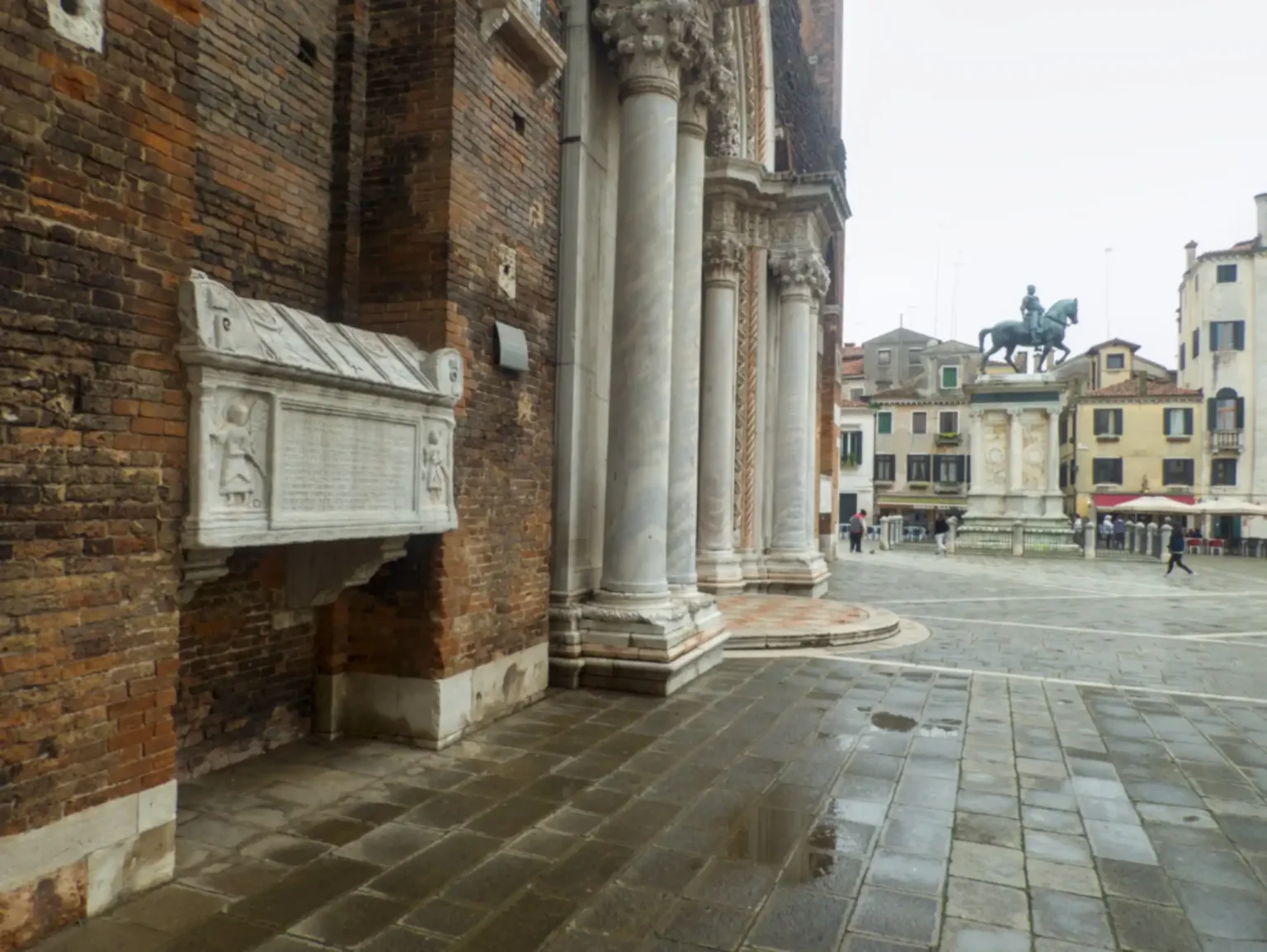
The death of Tiepolo
In 1249, Jacopo Tiepolo fell gravely ill, abdicated and retired to a monastery. He lived just long enough to see Marino Morosini elected as his successor.
Tiepolo was buried in still unfinished Basilica dei SS Giovanni e Paolo. The sarcophagus is now outside, on the façade, but initially, it was probably somewhere inside the early church. The building took two centuries to finish, and at some point his sarcophagus was moved to the outside, along with several others.
His son, Lorenzo Tiepolo, was elected doge in 1268. It was already then unusual for the son of a doge to become doge, but there were two other doges between father and son. When Lorenzo Tiepolo died in 1275, he was buried in the same sarcophagus as his father.
While this might seem strange to us, in the Middle Ages it was common to have several members of the same family share a tomb. During recent excavations in Piazza San Marco, some tombs were found along the foundations of the ancient Church of San Geminiano, which once stood in the middle of the current square. One such tomb contained four individuals, both adults and children.
The sarcophagus
The sarcophagus of Jacopo Tiepolo is Byzantine in origin, but modified for Venetian use.
It was either made in Constantinople, transported to Venice and adjusted, or it was made by Byzantine artisans in Venice.
The Venetian adaptations are the inscriptions, and the hats on the lid.
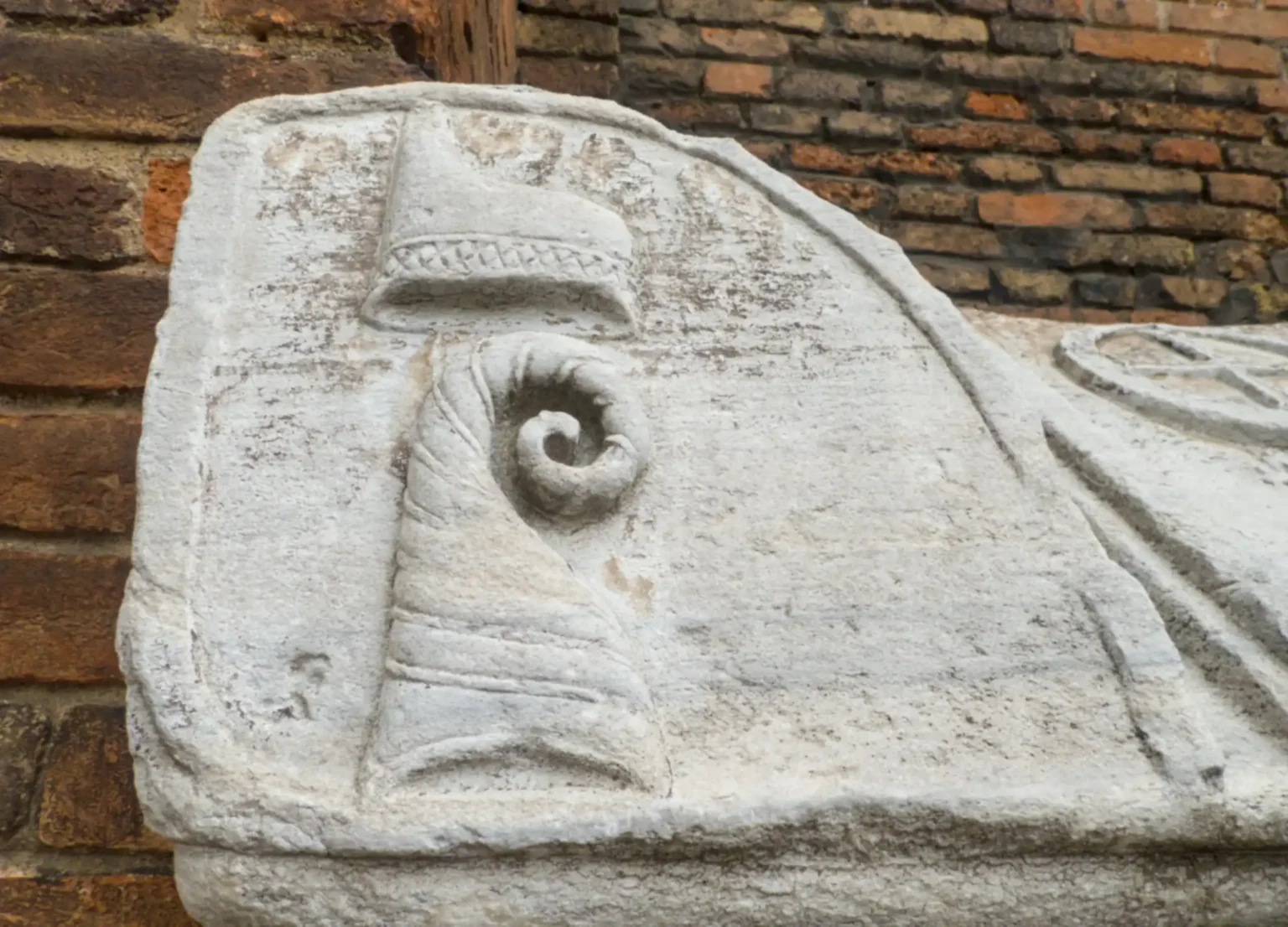
There are two hats depicted on each corner of the lid. The upper one is the Corno Ducale, the ceremonial hat of the doge, as a symbol of the status and dignity Jacopo Tiepolo had in life.
The other hat is from the coat of arms of the Tiepolo family. In later times, the coat of arms of the Tiepolo changed, in part because of the dishonour following the Baiamonte Tiepolo conspiracy in 1310. Instead of a silver hat in a blue field, they would use a silver castle or tower on a blue background, or some combination of the two.
The main inscription in Latin is a panegyric for Jacopo Tiepolo, listing all his virtues and achievements.
The bottom inscription, just one line, is a bit enigmatic. It gives the year of death of Jacopo Tiepolo as 1251, while he died in 1249, and the year of the death of Lorenzo Tiepolo as 1278, but he died in 1275.
Sometimes, when one visits the square today, it can be difficult to get close to the sarcophagus. Often children, playing football (soccer), use the opening underneath the tomb as a goal.
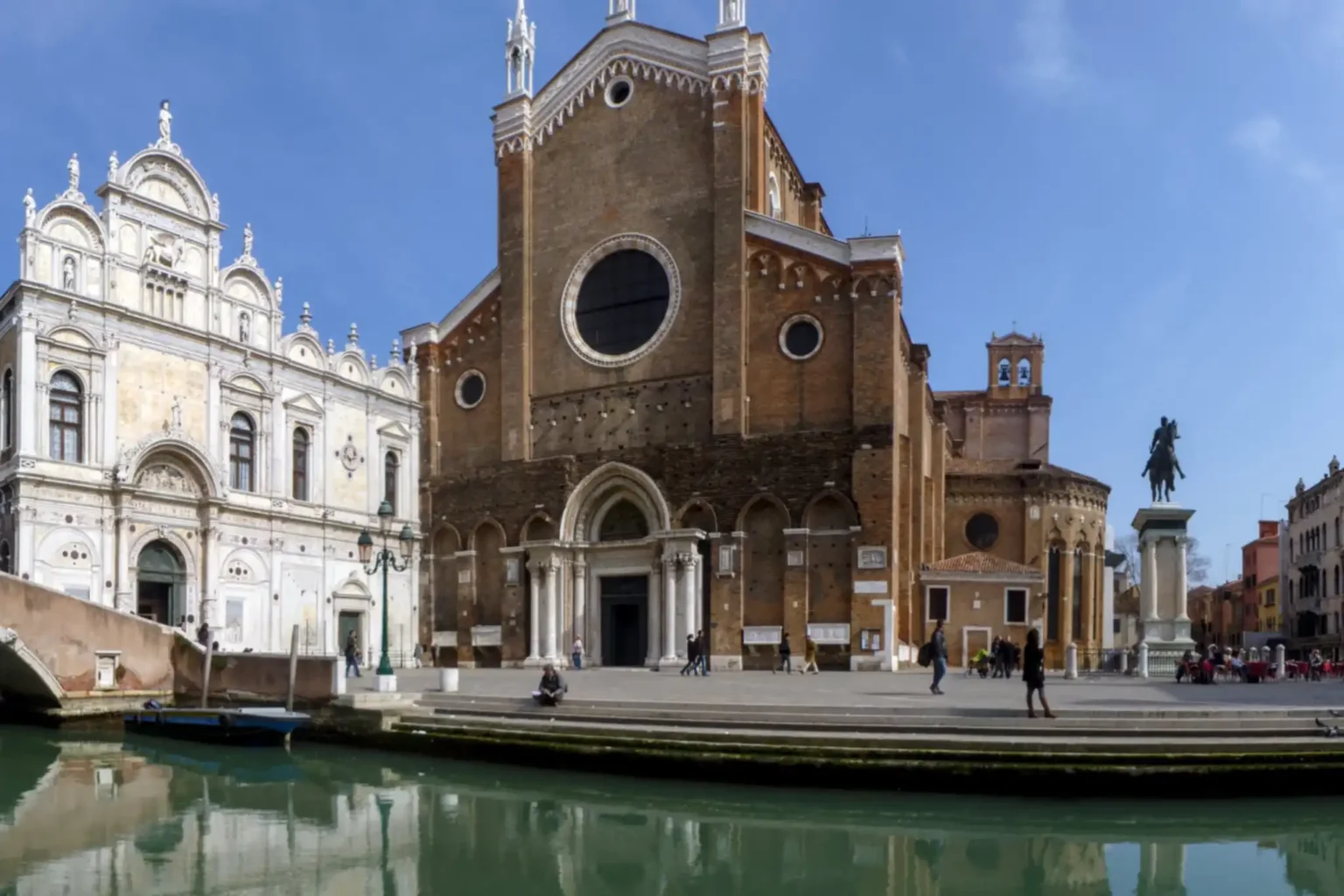
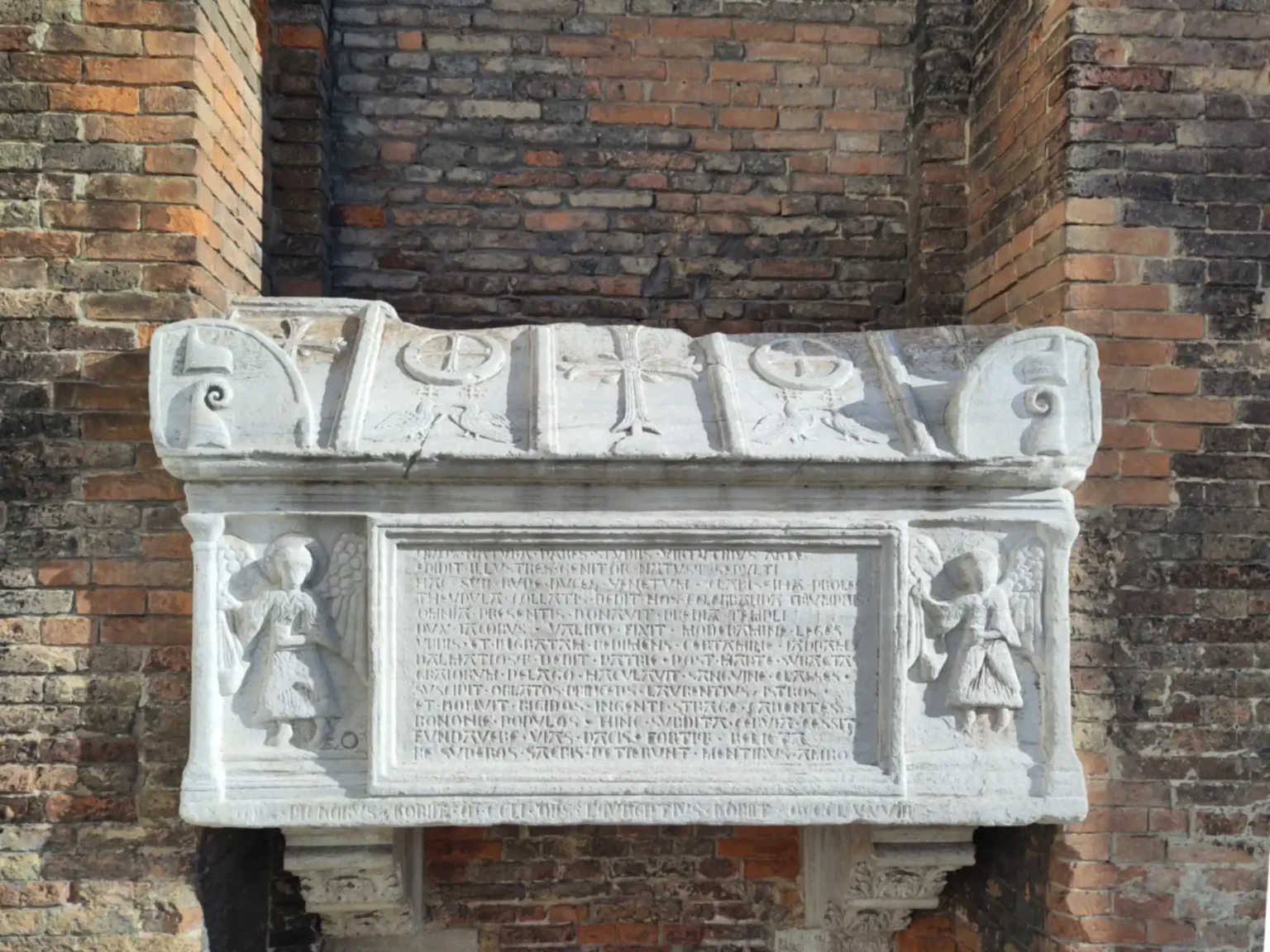


Leave a Reply